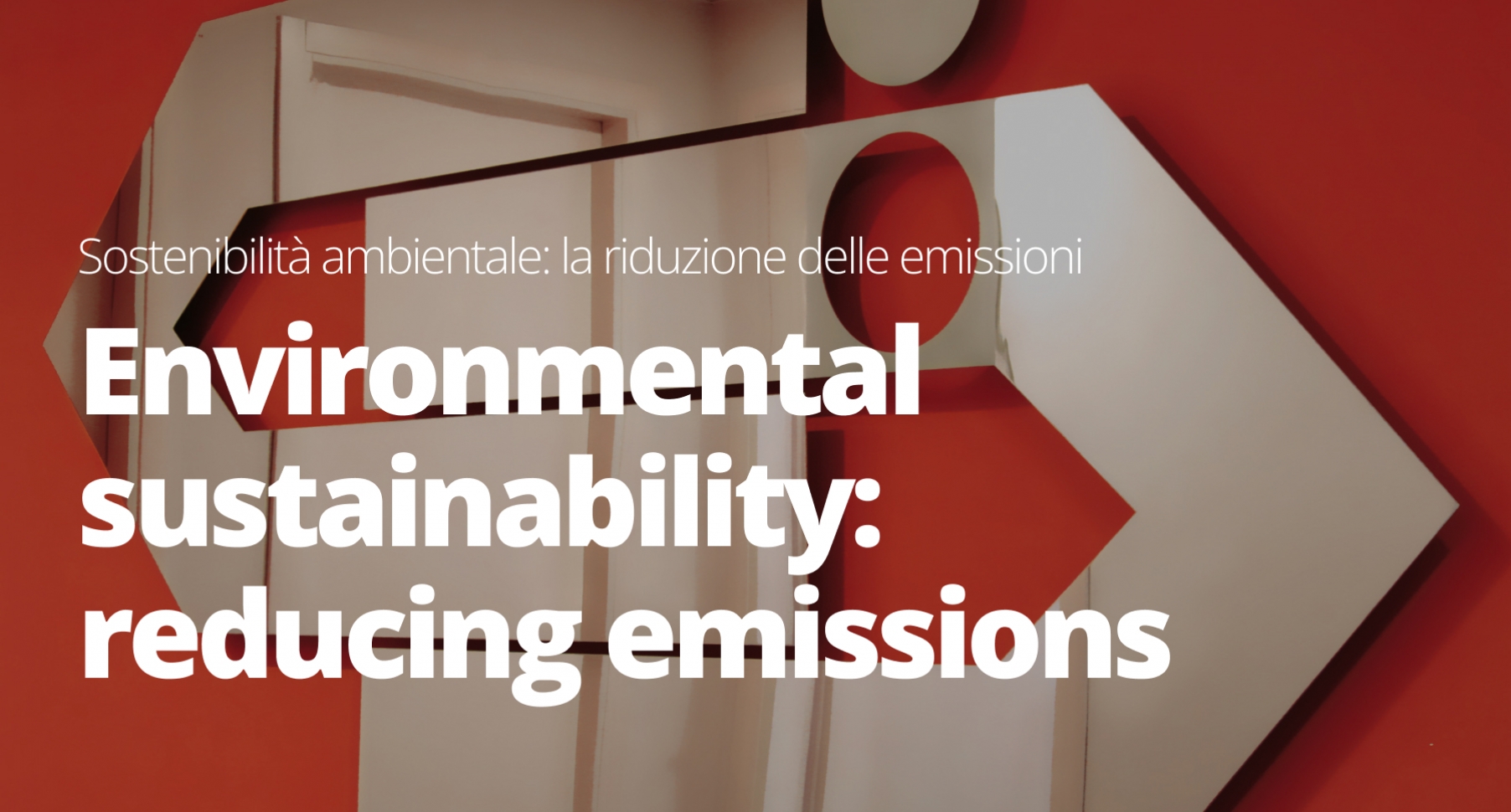The path towards Sustainability is a road that needs to be built on solid, measurable foundations: that’s why the first step is to have a thorough understanding of your processes, analyse them and find solutions, ways and times to improve their efficiency and thus minimise your impact on the environment. The mindset we adopt in the design and creation of our products, which over the years have earned the trust of growing markets around the world, is also adopted in our approach to sustainability.
The most sustainable environmental impact is one that avoids being produced
That’s a truism for all to see, but it is not always as obvious as it might appear: when it comes to carbon footprints, we need to remember that the most sustainable impact is the one that avoids being produced. That’s why we concentrate our efforts on reducing emissions.


First point: don’t allow our presence to be a burden on the environment
Sustainability is primarily based on adopting sustainable behaviours along the entire production chain: every action – even ones we take for granted – need to be analysed
Being responsible means, first and foremost, having perfect knowledge of every process, every product, every structure: this is the only way to implement effective solutions. Always remembering that the most sustainable impact is one that avoids being produced: that’s why the first objective must be to reduce emissions at source.
What can we need to do to minimise the impacts of an activity that clearly requires abundant energy? Installing efficient solar panels is certainly one way – something we have already done and will continue to do – but also and above all by reducing energy demands as far as possible.
Zero-energy air conditioning
One of the measures that Carcano has adopted involves the construction of an air conditioning system that exploits the systems in the production areas
There are a number of measures developed by Carcano to reduce, for example, processing waste and to optimise each process. A large company like ours, for example, consisting of several offices, requires large quantities of energy just for the air conditioning system in work areas. That’s why we wondered whether we could exploit the systems in the production areas and avoid this waste of energy.
The answer was yes: the air conditioning in the offices, in terms of heating and cooling, is run entirely by exploiting the cooling circuits in the production department.
What makes us particularly proud of this solution, as well as the fact that we are of course saving the environment from a significant amount of emissions, was the ability to apply so-called lateral thinking to a real problem: often the answers are right under our noses, if only we manage to see situations from a different point of view.
An important factor in ISO 14001 certification
Carcano’s efforts towards a management that is increasingly sustainable have also helped us to obtain ISO 14001 certification, which also requires a commitment towards ongoing improvement.
ISO 14001 certification for the Environmental Management System requires the company to be able to keep control over the effects that its activities have on the environment, also adopting an approach aimed at ongoing improvement: Carcano received this recognition in 2017, certifying a commitment that it has always shown since its foundation.
The fundamental procedures for obtaining ISO 14001 include, for example, identifying and assessing all environmental aspects and impacts, classifying and analysing waste on a regular basis, continuous monitoring and measurement with a commitment to ongoing improvement in performance. And that’s not all: you also need to perform similar checks on the behaviour of suppliers and contractors and establish a plan for dealing with any environmental emergencies.




